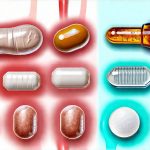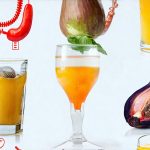A sensitive bladder, often associated with conditions like interstitial cystitis (IC) or overactive bladder (OAB), can significantly impact quality of life. For those experiencing frequent urges to urinate, pain during urination, or a general feeling of discomfort in the pelvic region, seemingly innocuous foods and beverages can become major triggers. Understanding these dietary sensitivities isn’t about eliminating entire food groups; it’s about identifying personal irritants and making informed choices to manage symptoms. What bothers one person with bladder sensitivity may not affect another, making a personalized approach crucial. This article delves into the common culprits that often exacerbate bladder issues, offering insights and practical considerations for navigating a more comfortable dietary landscape.
The relationship between diet and bladder health is complex and varies greatly from individual to individual. It’s important to remember that correlation doesn’t equal causation; just because you experience symptoms after eating something doesn’t automatically mean it’s the cause. However, certain foods are known to be potential irritants due to their chemical composition or effect on inflammation within the body. Recognizing these possibilities is the first step toward taking control of your bladder health and minimizing discomfort. Keeping a detailed food diary alongside symptom tracking can be incredibly helpful in pinpointing specific triggers – this allows for a more targeted approach than broad, restrictive diets. If you suspect your diet plays a role, consider exploring foods to avoid when managing sensitive bladder as a starting point.
Common Dietary Irritants
Many foods contain compounds that can irritate the bladder lining or increase inflammation, leading to worsened symptoms. Acidity is a major factor; highly acidic foods and drinks can directly stimulate the bladder, triggering urgency and discomfort. Caffeine and alcohol are notorious culprits as well, not necessarily due to their acidity (though some caffeinated beverages are acidic) but because they act as diuretics – increasing urine production and potentially overwhelming a sensitive bladder. Artificial sweeteners, while seemingly harmless, have also been linked to bladder irritation in some individuals, possibly due to the way they’re processed by the body. Identifying these triggers often requires careful observation and experimentation.
Beyond acidity, certain food families are frequently associated with bladder issues. The nightshade family (tomatoes, potatoes, peppers, eggplant) contains solanine, a compound that some believe can exacerbate inflammation. Citrus fruits, while healthy in many respects, are highly acidic and can be problematic for those with sensitive bladders. Spicy foods contain capsaicin, which can irritate the bladder lining. And fermented foods – like vinegar-based pickles or kimchi – often have high acidity levels. It’s important to note that this isn’t about avoiding these foods altogether; it’s about being mindful of your individual tolerance and adjusting intake accordingly. If you enjoy spices but find they bother your bladder, explore spice alternatives that won’t irritate the bladder.
A crucial aspect of managing dietary triggers is understanding the concept of cumulative effect. A small amount of a potentially irritating food might not cause immediate symptoms, but repeated exposure over time can build up and lead to increased discomfort. This highlights the importance of consistent monitoring and making gradual changes to your diet rather than drastic restrictions. It’s also worth considering that preparation methods can influence irritancy – for example, roasting vegetables may make them less problematic than frying them in acidic oils.
Identifying Your Personal Triggers
The most effective way to determine which foods irritate your bladder is through a process of elimination and reintroduction. This isn’t about going on a restrictive diet indefinitely; it’s about gaining clarity on your individual sensitivities. Here’s a suggested approach:
- Keep a Detailed Food Diary: For at least one week, meticulously record everything you eat and drink, including portion sizes and preparation methods. Alongside this, track your bladder symptoms – frequency of urination, urgency levels, pain intensity, etc. Be as specific as possible.
- Elimination Phase: Remove commonly irritating foods from your diet for 2-3 weeks. This includes acidic fruits and vegetables, caffeine, alcohol, artificial sweeteners, spicy foods, and potentially nightshades or fermented foods (depending on individual concerns). Monitor your symptoms during this phase to see if there’s any improvement.
- Reintroduction Phase: Slowly reintroduce one food at a time, every 2-3 days. Observe carefully for any changes in your bladder symptoms. If a particular food causes discomfort, remove it from your diet and try another.
This process requires patience and consistency, but the insights gained can be invaluable in managing your bladder health. It’s also helpful to work with a registered dietitian or healthcare professional who can provide personalized guidance and support throughout this journey. Remember that everyone is different, and what works for one person may not work for another. Understanding how foods affect urine production can be beneficial; consider reviewing foods that help urine volume stay consistent.
Hydration & Fluid Intake
While it might seem counterintuitive, adequate hydration is essential for bladder health – even (and especially) with a sensitive bladder. Dehydration concentrates urine, making it more irritating to the bladder lining. However, the type of fluids you consume matters significantly. Water should be your primary source of hydration. Avoid or limit caffeinated beverages, alcohol, and sugary drinks, as these can exacerbate symptoms.
- Sip water throughout the day rather than drinking large amounts at once.
- Aim for a consistent fluid intake based on your individual needs and activity level (generally 6-8 glasses per day).
- Pay attention to how different fluids affect your bladder and adjust accordingly.
The goal isn’t to restrict fluids entirely, but to choose hydrating options that are less likely to irritate the bladder. Herbal teas without caffeine can be a good alternative to coffee or black tea. Diluted cranberry juice (unsweetened) has been suggested by some as potentially helpful for urinary tract health, but it’s important to note that its acidity could be irritating for others. To explore gentler hydration options, look into foods that hydrate without triggering bladder urgency.
The Role of Inflammation
Chronic inflammation is often at the root of many bladder conditions, including interstitial cystitis. Certain foods can contribute to systemic inflammation within the body, indirectly impacting bladder health. A diet rich in anti-inflammatory foods can therefore play a supportive role in managing symptoms.
- Omega-3 Fatty Acids: Found in fatty fish (salmon, tuna), flaxseeds, and walnuts – these help reduce inflammation.
- Antioxidant-Rich Foods: Berries, leafy greens, and colorful fruits and vegetables are packed with antioxidants that protect against cellular damage.
- Fiber-Rich Foods: Whole grains, beans, and lentils promote gut health, which is closely linked to immune function and inflammation levels.
Conversely, limit foods known to promote inflammation: processed foods, sugary drinks, red meat, and excessive amounts of saturated fats. While dietary changes alone won’t cure a sensitive bladder, they can significantly contribute to overall well-being and reduce symptom severity by addressing the underlying inflammatory processes within the body. Focusing on a balanced, nutrient-rich diet is key to supporting long-term bladder health. Consider how foods that regulate bladder sensitivity naturally might fit into your plan.





















